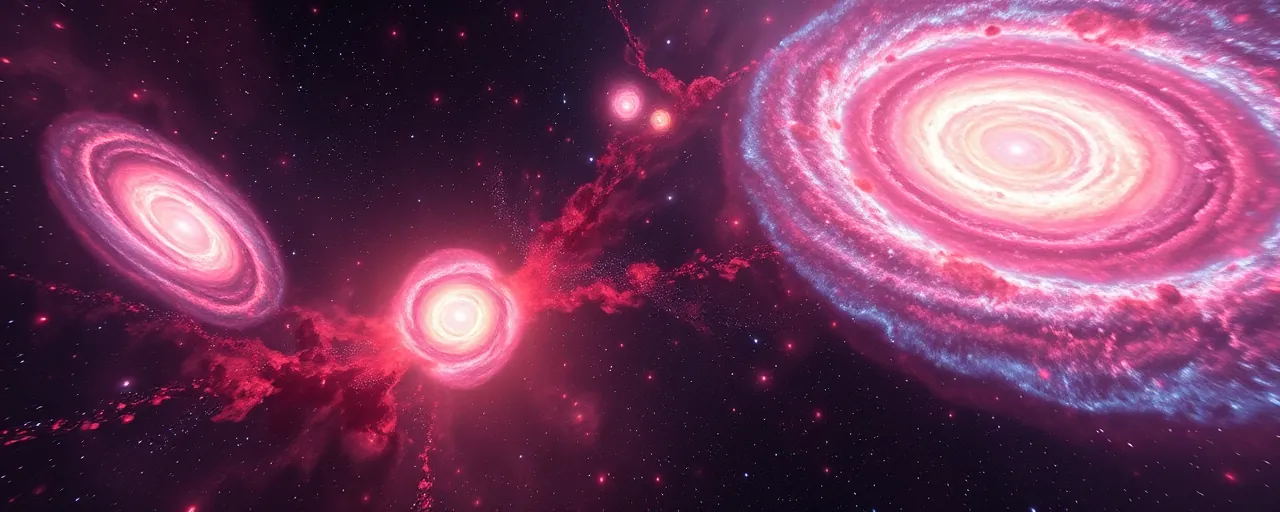A New Window on the Universe
Late last month, a spacecraft orbiting high above Earth snapped its first glimpses of the cosmos. NASA's SPHEREx observatory, launched on March 11, 2025, captured a series of initial images on March 27, revealing a vibrant tapestry of stars and galaxies. These early pictures, painted in rainbow hues to represent invisible infrared light, signal that the mission is off to a strong start. Scientists and engineers are buzzing with anticipation as they prepare to unlock secrets about the universe’s origins and evolution.
This is no ordinary telescope. Unlike its predecessors, which zoom in on tiny patches of sky, SPHEREx takes a broader approach, aiming to map hundreds of millions of galaxies across the entire celestial sphere. Over the next two years, it will create a detailed 3D portrait of the cosmos, offering a fresh perspective on how galaxies formed and how the universe expanded in its earliest moments. With its detectors now active and cooling to frigid temperatures, the observatory is poised to deliver on its ambitious promise.
Peering Through Infrared Eyes
The first images from SPHEREx are a technical triumph. Each exposure, taken by six detectors, contains over 100,000 light sources, from nearby stars to faint, distant galaxies. These uncalibrated snapshots aren’t yet ready for deep scientific analysis, but they showcase the telescope’s wide field of view, stretching 20 times broader than the full Moon. To make sense of the infrared data, researchers assigned visible colors to different wavelengths, turning invisible heat radiation into a vivid display.
Spectroscopy, the technique at SPHEREx’s core, breaks light into its component wavelengths, much like a prism splits sunlight into a rainbow. This method reveals the makeup of celestial objects and their distances from Earth. By studying these patterns, scientists hope to trace the physics of the universe’s first seconds after the Big Bang and investigate the origins of water in our galaxy. The mission builds on a rich history of spectroscopic surveys, like the Sloan Digital Sky Survey, which mapped millions of galaxies to refine our grasp of cosmic expansion.
A Collaborative Cosmic Effort
Behind SPHEREx lies a global endeavor. Managed by NASA’s Jet Propulsion Laboratory in California, the mission draws on expertise from institutions across the United States, South Korea, and Taiwan. The telescope itself, built by BAE Systems, operates in a polar orbit 404 miles above Earth, where it will complete four full-sky maps by mid-2027. Once collected, the data will be processed at Caltech’s IPAC and made freely available through NASA’s Infrared Science Archive, continuing a tradition of open access seen in projects like Hubble and the James Webb Space Telescope.
International collaboration in space missions is nothing new, yet it remains a delicate balance. Partnerships, such as those for the International Space Station, thrive on shared goals despite occasional geopolitical friction. SPHEREx’s data-sharing model reflects a broader push for transparency in astrophysics, though challenges persist. Ensuring equitable access across nations and safeguarding sensitive information, like satellite-tracked locations, are ongoing concerns for researchers and policymakers alike.
Bridging Past and Future
SPHEREx stands on the shoulders of earlier all-sky surveys. Telescopes like Planck, which charted the Cosmic Microwave Background, and Spitzer, a pioneer in infrared observations, laid the groundwork for understanding cosmic structure and star formation. Where those missions offered snapshots or focused views, SPHEREx combines breadth with depth, capturing more wavelengths than any prior survey of its kind. Its findings will complement detailed observations from targeted telescopes, such as the James Webb, creating a richer picture of the universe.
Advancements in infrared technology have made this possible. Decades ago, astronomers relied on rudimentary detectors cooled by liquid nitrogen. Today, sophisticated arrays, chilled to minus 350 degrees Fahrenheit, detect faint signals through cosmic dust. These innovations, honed in missions like Webb, allow SPHEREx to peer into regions obscured to visible-light telescopes, revealing hidden stories of galactic birth and evolution.
What Lies Ahead
With its detectors humming and its focus sharp, SPHEREx is set to begin routine operations by late April. Each day, it will snap around 600 exposures, building a dataset that could reshape our understanding of the cosmos. Scientists are eager to explore questions about dark energy, galaxy clustering, and even the chemical building blocks of life. The mission’s public data release will also invite researchers worldwide to dig into the findings, potentially sparking discoveries no one’s yet imagined.
This is just the beginning. As SPHEREx paints its cosmic canvas, it joins a lineage of tools pushing human knowledge outward. Its maps may guide future missions, refine cosmological theories, or inspire a new generation to look skyward. For now, the universe has a new observer, and its first glances suggest a story worth telling, one star, one galaxy, one wavelength at a time.
